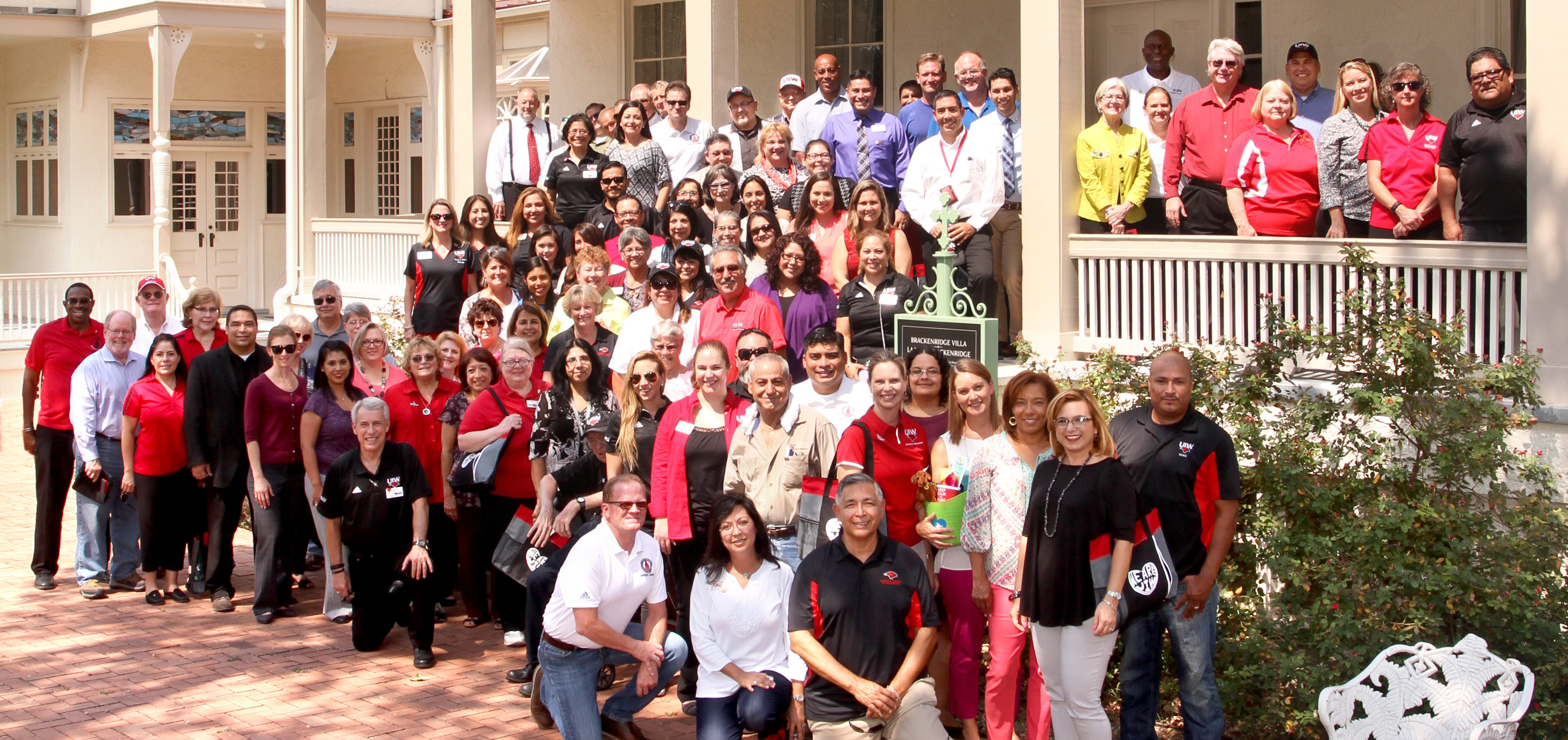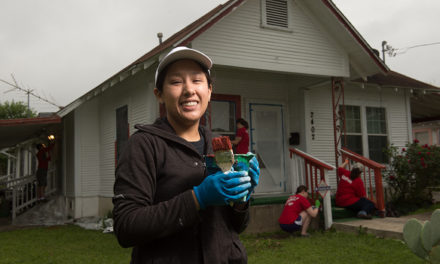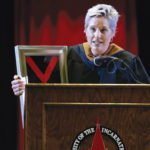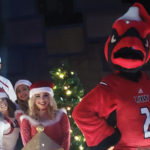
UIW doctoral student Andrea Littlefield works with St. Thomas More first grader Eric Alvarez during an individual assessment as Dr. Susan Hall observes. The assessment will be used to ensure the children are making progress with their early reading skills. UIW student Sarah Hanson (background) works with first grader Tyler Moser on the assessment.
By Drs. Susan Hall and Judith Beauford
When the teacher at St. Thomas More Catholic School announced to her class of 4-year-olds that Dr. Judith Beauford would take each one into another room for assessment, children gasped. It sounded to them as if the pediatrician had come to school and would soon be giving out shots or yucky medicine. The grandmother in Beauford recognized the children needed reassurance, so before the group of UIW researchers could begin work, she explained she wasn’t “that kind of doctor.” From then on, the children knew her as the doctor who loves numbers.
St. Thomas More, located in an older suburban area of northeast San Antonio, serves as the site for an innovative research project conducted by UIW mathematics education doctoral students and Beauford, professor in the Dreeben School of Education and director of UIW’s doctoral studies.
UIW and St. Thomas More collaborate on teaching and research projects that help both parties. The small school looks for opportunities such as its association with UIW to boost student achievement and broaden student horizons. Meanwhile, the Dreeben School looks for ways to give university students realistic experiences in teaching and research.
On this day, Beauford and her students are studying the impact of number names on the understanding of place value. The number names used in some languages, such as Chinese, might make it easier to understand the meanings of the numbers. Teachers introducing counting to pre-K and kindergarten students emphasize the meanings of numbers more than the traditional names. For example, 26 is read as “two-ten six.”
UIW doctoral student Dina Rodriguez assesses St. Thomas More first grader Wesley Larson’s reading skills with help from Hall.
Started in 2003, the project has produced promising results. The pre-K and kindergarten students are tested each semester, and then their performance on achievement tests is followed as they progress through the grade levels. Children who use the number meanings in their early math education are outperforming those who entered St. Thomas More later.

UIW doctoral student Dina Rodriguez assesses St. Thomas More first grader Wesley Larson’s reading skills with help from Hall.
This real world experience helps UIW students learn that research is sometimes unpredictable. After a long day of working one-on-one with students, UIW graduate student Sandra Browning was tired but looking forward to interviewing Charlie, who seemed to really grasp the meanings of numbers during the previous year. The 5-year-old came bouncing in, excited to show how much he had learned that year. Browning’s heart sank as Charlie counted but avoided the topic of place value. She feared he didn’t remember the meaning of the numbers. As he was leaving, he turned and said, “Oops, I forgot. Can I do it again with my ‘ten numbers?'”
UIW undergraduates visit St. Thomas More, too. The school generously provides real world experience for students preparing to be teachers. In Dr. Susan Hall’s class, they learn to give individual reading assessments. One day, the first graders were reading aloud for UIW students. It was a busy morning as both their teacher and Hall, professor in the Dreeben School of Education, ushered children between the classroom and the cafeteria where the assessments were taking place. Proudly carrying his book, Luis looked sheepish when one UIW student said to him, “Oh, you’re back to read again, Luis.” Two other UIW students revealed that Luis had also read to them. As the teacher took him back to her classroom, Luis explained, “But I just love to read!”
The UIW students benefit in several ways from their experience at St. Thomas More. Often it is their first extended classroom experience with young students, and they see first hand how children learn and behave. As any good partnership should, this connection serves both partners.
